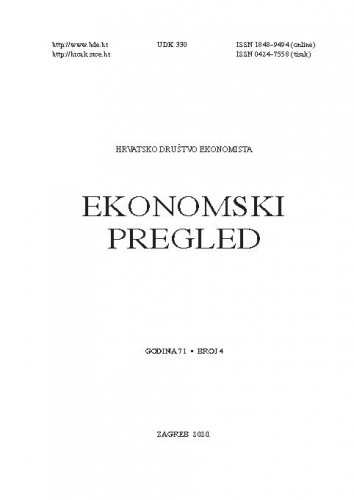Two main regularities in the field of urban economics are Zipf’s law and Gibrat’s law. Zipf’s law states that distribution of largest cities should obey the Pareto rank-size distribution while Gibrat’s law states that proportionate growth of cities is independent of its size. These two laws are interconnected and therefore are often considered together. The objective of this paper is the investigation of urban regularities for Croatia in the period from 1857 to 2011. In order to estimate and evaluate the structure of Croatian urban hierarchy, Pareto or Zipf’s coefficients are calculated. The results have shown that the coefficient values for the largest settlements in different years are close to one, indicating that the Croatian urban hierarchy system follows the rank-size distribution and therefore obeys Zipf's law. The independence of city growth regarding the city size is tested using penal unit roots. Results for Gibrat's law testing using panel unit root tests have shown that there is a presence of unit root in growth of settlements therefore leading to the acceptance of Gibrat’s law.; Dvije temeljne zakonitosti na polju urbane ekonomike su Zipfov zakon i Gibratov zakon. Zipfov zakon nalaže da bi distribucija najvećih gradova trebala slijediti raspodjelu prema Pareto rangu veličine dok Gibratov zakon navodi da je proporcionalni rast gradova neovisan o njihovoj veličini. Ta dva zakona su međusobno povezana i stoga se često razmatraju zajedno. Cilj ovog rada je istraživanje urbanih zakonitosti za Hrvatsku u razdoblju od 1857. do 2011. godine. Kako bi se procijenila i ocijenila struktura hrvatske urbane hijerarhije, Pareto ili Zipfovi koeficijenti su izračunati. Rezultati su pokazali da vrijednosti koeficijenata za najveća naselja u različitim godinama iznose približno 1, što upućuje na zaključak da hrvatski urbani hijerarhijski sustav slijedi pravilo veličine ranka odnosno Zipfov zakon. Neovisnost rasta gradova u ovisnosti o njihovoj veličini ocijenjeno je pomoću testa jediničnog korijena. Rezultati testiranja Gibratovog zakona uz pomoć panel testa jediničnog korijena su pokazali da postoji prisutnost jediničnog korijena za rast naselja što upućuje na prihvaćanje Gibratovog zakona.
Sažetak

 Ekonomski pregled : mjesečnik Hrvatskog društva ekonomista : 71,4(2020) / glavni i odgovorni urednik Josip Tica.
Ekonomski pregled : mjesečnik Hrvatskog društva ekonomista : 71,4(2020) / glavni i odgovorni urednik Josip Tica.